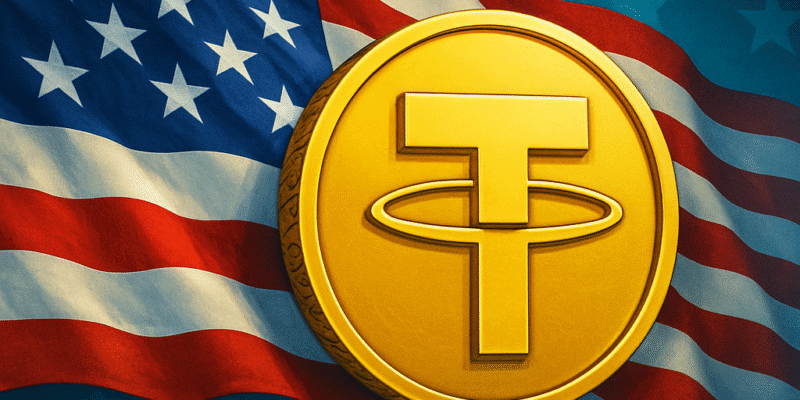Tether has long been a fixture in the world of cryptocurrency, but recent moves by the company suggest it is evolving from a digital currency pioneer into a financial powerhouse with far broader ambitions. With an estimated valuation of $515 billion and more than $13 billion in profit last year, Tether is now drawing the attention of both Wall Street and Washington.
The company, which issues the world’s largest stablecoin, has been in operation since 2014. However, it is only in the past year that institutional investors have begun to treat Tether as a serious player in global finance. This shift was fueled in part by a breakout moment earlier this year, when Ark Invest’s Cathie Wood highlighted Tether’s performance in her firm’s “Big Ideas 2025” report. Few companies, she noted, have been able to achieve that level of profitability with such a lean workforce. With fewer than 200 employees, Tether has out-earned nearly every firm in the S&P Financial Services Select Sector Index.
More recently, attention has turned to how Tether is planning to use its massive profits. The company holds over $120 billion in U.S. Treasury bills, making it one of the largest single holders of short-term government debt. That alone has placed Tether on the radar of the U.S. Treasury Department, but the company’s broader investment strategy is what has analysts and investors talking.
In recent months, Tether has quietly invested over $5 billion into various U.S.-based ventures. These include blockchain infrastructure projects, artificial intelligence startups, brain-computer interface firms, and even media platforms like Rumble. One of the most notable investments was in Twenty One Capital, a newly launched Bitcoin treasury firm that is now the third-largest corporate holder of Bitcoin in the world.
These moves are part of what many have described as a “Pro-America” strategy. Although Tether is headquartered in El Salvador, the company appears eager to align itself more closely with the U.S. market. This shift comes at a time when the political climate in Washington is increasingly favorable to crypto. The GENIUS Act, passed earlier this summer, laid the groundwork for stablecoin regulation and signaled strong support for digital assets under the Trump administration. Treasury Secretary Scott Bessent has gone so far as to say that stablecoins could help position the U.S. as a global crypto superpower.
Despite this growing alignment, Tether has made it clear that it has no immediate plans to launch consumer-facing stablecoin payment products in the United States. The company’s CEO, Paolo Ardoino, has described the U.S. retail payments space as “a race to the bottom,” suggesting that the competition from credit cards, debit cards, and cash is simply too intense to make stablecoin payments viable at the consumer level.
In emerging markets, however, the story is very different. In countries facing hyperinflation or weak banking infrastructure, stablecoins like Tether’s offer an attractive alternative to local currencies. These digital dollars give unbanked individuals a way to store and transfer value securely, with lower fees and greater stability. For this reason, Tether continues to dominate in regions like Latin America, Africa, and Southeast Asia.
That said, the company is showing growing interest in offering its stablecoin solutions to large institutional clients in the United States. These clients could use stablecoins for cross-border payments and real-time settlements—areas where blockchain-based transactions can offer speed and efficiency advantages over traditional financial systems.
So where does this leave the average investor? While Tether itself is privately held and has no immediate plans for an IPO, investors can still gain exposure to the company’s growing influence. Buying the Tether stablecoin is one option, though its value is designed to remain fixed at $1, making it less useful for capital gains. Instead, investors might consider targeting businesses that are aligned with Tether’s investment focus, particularly in sectors like artificial intelligence, Bitcoin infrastructure, and decentralized media platforms.
Tether’s strategic pivot toward the U.S. market is not just a public relations exercise. It reflects a long-term vision of a world where stablecoins are deeply embedded in financial systems and where companies like Tether are shaping the future of money. With regulatory clarity improving and institutional interest growing, Tether’s move may be the beginning of a much larger transformation in how global capital flows are managed and monetized.
For now, investors would be wise to watch closely. As Tether continues to expand its footprint quietly, but powerfully, new opportunities will almost certainly follow.

Comments